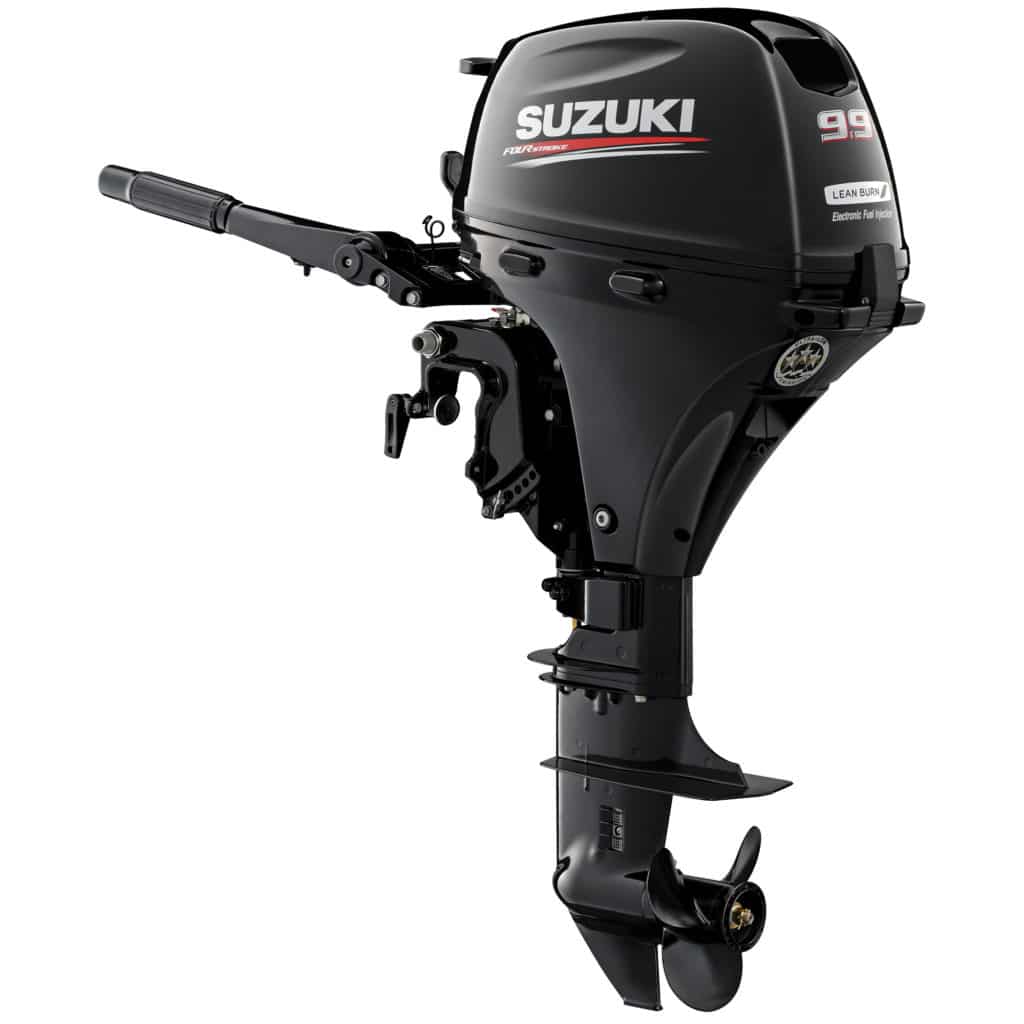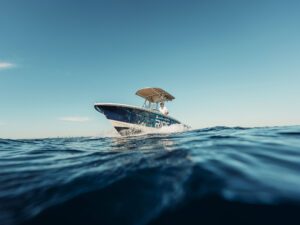
Choosing an auxiliary outboard requires boaters to make a number of decisions and consider a number of variables. Certainly, the reputation of, and access to, the dealer for the motor chosen plays a big role in whether the purchase proves to be a good one. But the latest portable outboard motors sport many features older models lacked. Consider these features during your auxiliary outboard motor purchase.
Fuel Injection
Many of the newest small engines, like the Suzuki BT model pictured here, offer fuel injection. This is a great feature for a kicker motor, because leaning over the transom and trying to start a balky outboard is not only inconvenient, it can prove unsafe. If buying new, we strongly recommend a fuel-
injected auxiliary motor.
Handle-Mounted Control
Unless it was rigged as a remote-controlled engine, older portable outboards required the operator to reach alongside the cowling in order to shift gears, requiring leaning out over the transom if the engine is bracket-mounted. Thankfully, newer engines offer throttle, shift and steering friction on the tiller handle itself.
Power Tilt
Some newer-model auxiliary outboard engines, like the Suzuki shown, offer power tilt. This is a great convenience feature, and again, it means the operator does not have to lean over the transom during the normal course of use.
Center-Mounted Tiller Handle
If your kicker is remote-controlled, or you choose to lock the auxiliary motor’s steering and use your primary engine as a rudder, it may not matter, but for those boaters who plan to steer from the auxiliary motor itself, a center-mounted tiller, such as what Mercury Marine offers, makes it easy whether the engine is installed to port or to starboard.
Shaft Length
You’ll want the kicker motor’s anti-ventilation plate to be even with the bottom of the hull for best efficiency. Many boaters will give up some efficiency in return for more reliable thrust in rough water by mounting the engine somewhat deeper. Installed off-center, the kicker will have a shorter transom height, and thus need a shorter shaft length than the main motor (unless the boat is flat-bottomed). Motors such as Yamaha’s 9.9 HT come in 15-, 20- and 25-inch shaft lengths.
Charging System
Operating electronics, pumps, and entertainment can tax your boat’s electrical system. In fact, it’s likely you’ll need to practice amp management regardless of which kicker you run. That said, some motors, such as the 9.9 hp models from Honda and Suzuki, offer alternators with 12 amps of charging output.









